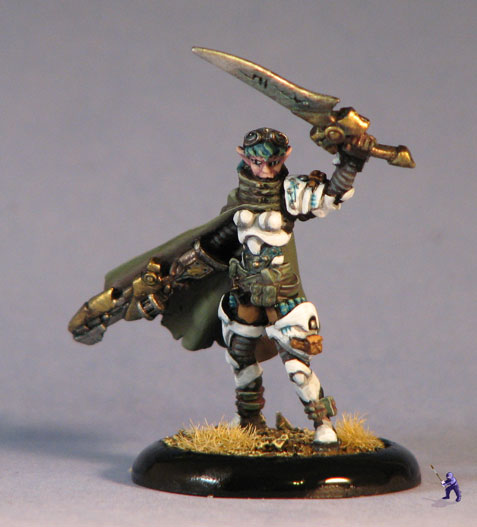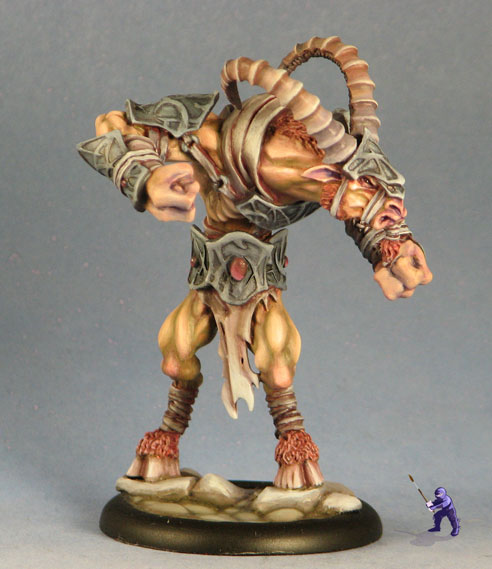When I first started painting miniatures, I had a hard time with color recipes. Early on, I found an issue of White Dwarf with some of the old ‘Eavy Metal tutorials in it (mostly from Mike McVey). It was a huge help, and got my painting on track, but it also limited me quite a bit.
For example, I found a tutorial that gave me the color recipe for Khorne Red armor (a dark red, highlighted to a lighter red and then an orange). Well, that was my red, and it was my only red for quite a while.
I’ve come a long way since then, and I’m quite a bit beyond making my own recipes. One of the things I’ve learned is that you don’t always need to stick to even similar colors when you’re shading and highlighting.
For example:
This mini has quite a bit of different shading to her. Although the white armor was done pretty strait forwardly (it has just a little bit of blue in its shading) the rest of the mini was shaded in a dark magenta.
You can see it a little in her face, her green belt or on her grey sleeves, but there’s just a bit of a dark magenta beneath those colors. The red creates an interesting warm pallet even with colors that are not normally very warm.
Here’s a more extreme example:

I used a fairly standard human flesh tone for this Satyr’s skin, but I shaded it with several different colors. Parts of him are shaded with green, parts are shaded with purple, and other parts with red.
It is also easy to see the red shading in the loin cloth color, which is highlighted up to a light blue-grey color.
The highlighting has the same variety to it. Some parts are highlighted with lighter flesh tones, but some are highlighted in blue.
Actual objects in nature often have coloring this dynamic to them. For example, the coloring we see on a face is going to be a combination of pigments, blood and anatomy under the surface and the light- both from your lightbulb and a little coming in the window. All of these things are different colors, and there’s a lot of complexity to it.
Go ahead and experiment to see what happens when you shade your red with a green or if you highlight your grey with a pink, or if you shade your ork’s flesh with a red color. You may find you like the results.


No comments:
Post a Comment